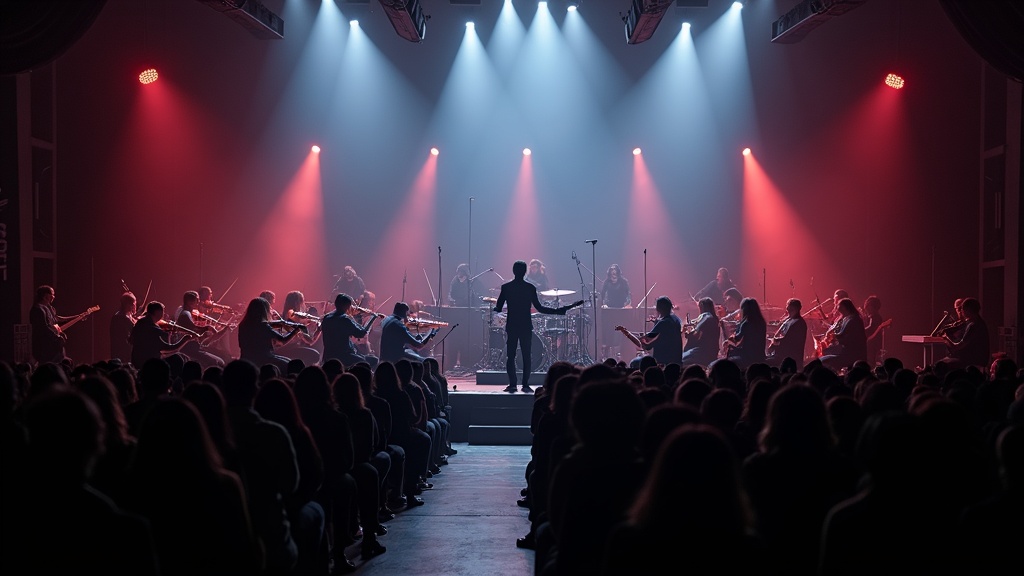Orchestration has had an incredible impact on metal music, mixing bold symphonic elements with heavy guitars, thundering drums, and all the raw power you’d expect from the genre. If you’ve ever listened to a metal track featuring sweeping string sections, dramatic brass, or even a full choir, you’ve felt what orchestration can do. Today, I’m breaking down how adding orchestral ideas and instruments transforms metal, why bands do it, the challenges involved, and some tips for getting into symphonic or orchestrated metal—either as a listener or a musician.

Why Metal Bands Turn to Orchestration
Metal is known for its thick guitar riffs, pounding drums, and aggressive vocals, so bringing in orchestral elements may seem like a wild choice at first. But there’s a lot more to this combo than just novelty. Bringing together traditional classical instrumentation and metal creates a gigantic soundscape; something that’s hard to pull off with a standard rock setup.
Bands often use orchestration to create dramatic tension, heighten the emotional impact, or tell a story in a way that sounds bigger and bolder. You end up with layers: heavy riffs underneath soaring violins, epic choirs over winding synths, and woodwinds adding subtle melodic lines you might miss on the first listen. Orchestration helps paint those really cinematic pictures in your mind, which is perfect for genres like symphonic metal or progressive metal that lean into big stories and fantasy themes.
Groups like Nightwish, Dimmu Borgir, Epica, and Septicflesh have led the charge in this area, and plenty of other bands have followed along, experimenting with full orchestras or just sprinkling in some classical flavor here and there. Fans of symphonic metal especially love that “wall of sound” effect; the heaviness of metal mixed with the sophistication of classical music.
How Orchestration Changes the Way Metal Sounds
Bringing orchestration into metal isn’t just about adding strings or horns for the sake of it. It actually changes the songwriting process and the way the music feels. Orchestras open up a massive toolbox for composers and songwriters, giving them a way to build tension or release it, highlight a vocal line, or make a breakdown hit even harder.
I’ve noticed orchestrated metal often gets more dynamic, moving from super quiet, intimate moments to huge, booming choruses. Here’s how different orchestral elements transform the music:
- Strings: Violins, violas, and cellos can add an emotional edge; everything from dark and brooding to uplifting and bright.
- Brass: French horns and trumpets fill the space with heroic or ominous tones, which works especially well for epic tracks.
- Woodwinds: Flutes and clarinets add texture and nuance, making sections feel more magical or mysterious.
- Percussion: Timpani, cymbals, and gongs boost the drama and help mark big transitions.
- Choirs: A group of singers (either live or digital) can push the music into gothic territory or provide haunting atmosphere.
This blend creates unique experiences you just don’t get with typical band instruments. Sometimes, orchestration is woven throughout every song on an album; other times, it pops up for a killer intro, interlude, or dramatic ending. The flexibility is part of what makes orchestration in metal so much fun to explore.
Getting Started: Ways Bands Add Orchestration
There’s no single recipe for working orchestration into a metal track. Some bands hire actual orchestras and composers, while others assemble everything using quality plugins and virtual instruments. Here are a few ways musicians make it happen:
- Full Orchestra Collaboration: Groups like Metallica (with their “S&M” album) brought in an entire symphony to perform their classic songs. This produces an undeniably epic sound, but it’s also expensive and requires a ton of coordination.
- Virtual Orchestration: Many bands use digital libraries and plugins to program their orchestral parts. This is much more affordable and flexible. Software like EastWest, Spitfire, or Kontakt lets bands get pro-level sounds from their laptops.
- Live Orchestral Performers: Bands might bring in a solo violinist or cellist, or add a keyboardist who plays orchestral patches live, blending technology and classical training on stage.
- Arrangers and Composers: Some bands work closely with a dedicated orchestrator who writes custom parts to fit their songs, allowing the music to feel more natural than just stacking random strings over riffs.
Each approach has its pros and cons. Live orchestras deliver a richness hard to match, but digital options have come a long way and let bands experiment without breaking the bank.
Things to Think About When Orchestrating Metal
Merging metal and orchestral elements isn’t always smooth sailing. Musicians face some pretty unique challenges here:
- Mixing Heavy Guitars and Orchestras: Metal guitar tones can eat up a lot of sonic space, so there’s a constant battle to avoid instruments clashing with each other. Careful arranging and mixing help ensure nothing gets buried.
- Arranging for Many Instruments: Orchestrating isn’t the same as writing a standard band song. You need to consider the role each instrument plays and make sure everyone in the orchestra can actually perform the parts.
- Live Performance Challenges: Recreating orchestrated sections live can be tough. Some bands use backing tracks or hire additional musicians for tours. Timing and syncing everything is super important.
- Budget and Logistics: Collaborating with a full orchestra can get expensive, especially for independent bands. Virtual solutions help keep things accessible.
Mixing and Layering Tips
To keep the sound clean and powerful:
- Keep the arrangement tight; don’t have every section playing at once.
- EQ instruments so they occupy different frequency ranges, letting guitars and strings shine separately.
- Give orchestra sections their own space in the mix with reverb and panning.
These tips are pretty handy for anyone aiming to balance the beastly sound of metal with the lushness of orchestral music.
Cool Ways Orchestration Shows Up in Metal
Orchestration pops up all over metal, from classical-inspired intros to entire symphonic albums. Here are a few real-world scenarios I’ve enjoyed:
- Full Symphonic Albums: Bands like Epica and Xandria release albums where orchestration is at the core. The orchestral parts drive the melodies and often form the foundation of the songs.
- Concerts with Live Orchestras: When artists like Dimmu Borgir or Metallica take the stage with a symphony, fans get a one-off show that’s both massive and unforgettable.
- Concept Albums: Progressive and power metal bands use orchestration to step up story-driven concept albums, giving characters their own themes or representing scenes with different sections of the orchestra.
- Bridge or Interlude Sections: Short symphonic passages between heavy moments help reset the energy and keep listeners engaged.
This variety helps orchestration stay fresh in the genre and gives fans plenty of different styles to choose from. Some bands even throw in folk music influences or electronic elements, making for some wild and unique listening experiences. If you love surprises, orchestrated metal won’t let you down!
Questions People Often Have About Orchestrated Metal
Exploring orchestra-infused metal brings up a few questions, especially for newcomers. Here are some things others have asked me (and what I usually say):
Question: Are most orchestrated metal tracks recorded with real orchestras?
Answer: Not always. Lots of bands use digital libraries and sample packs, which are surprisingly realistic and help with budget and logistics. When budget and scheduling work out, some bands absolutely go with the real thing for maximum impact.
Question: Is orchestrated metal its own subgenre?
Answer: There are a few subgenres that focus on this sound, like symphonic metal, but lots of others dip into orchestration for a specific project or theme. Black metal, folk metal, and progressive metal bands all experiment with orchestral elements.
Question: Do you need classical experience to add orchestrations?
Answer: It helps to know the basics, especially around how different instruments work, but there are tons of resources online. Software tools even have presets and templates for writing authentic-sounding parts. Learning some music theory is handy, but jumping in and experimenting is also a really solid way to start.
Final Thoughts on Orchestration in Metal
Blending orchestration with metal opens up a world of creative opportunities, from epic arrangements to emotional adventures you just can’t get with typical rock instruments. Bands that embrace orchestration aren’t limited by genre; they get to tell bigger stories and push musical boundaries in ways that feel fresh, cinematic, and exciting. For listeners, it’s a big win, too: every spin brings something new, whether it’s a lush string swell, an epic brass hook, or a choir that gives you goosebumps.
If you’re a metal fan looking to branch out, or a musician thinking about dialing up your arrangements, symphonic and orchestrated metal is worth checking out. There’s a whole universe of sound waiting, and it only gets better the more you explore. Don’t be afraid to check out new albums, watch live symphonic shows, or even try creating your own orchestral parts in your music software—the only limit here is your imagination!
